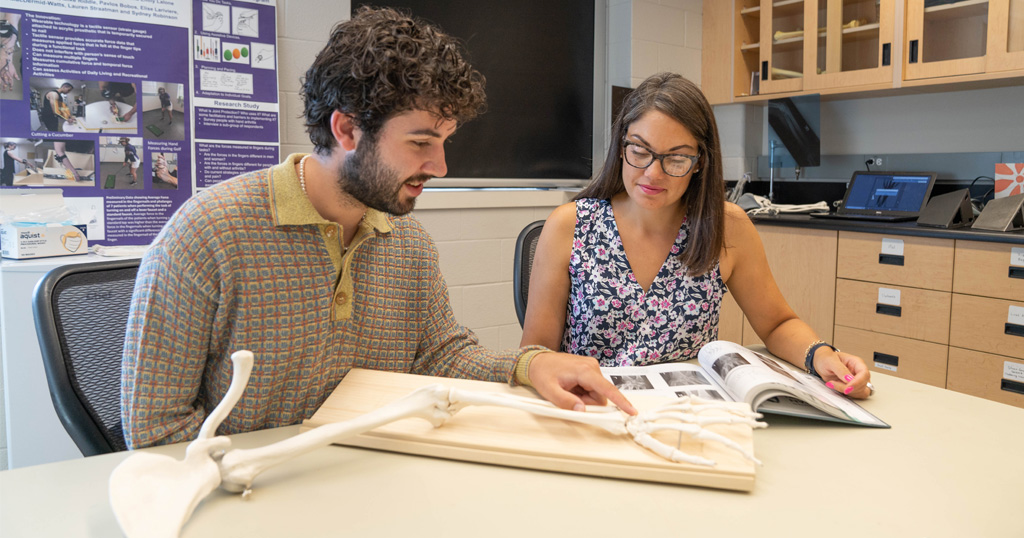Media
Contact
Communications Specialist
Faculty of Engineering
Spencer Engineering Building
Room 2072
Western University
Tel: 519-661-2111 ext. 87015
Email: engineeringcomms@uwo.ca
Western researchers are developing a tool to detect wrist injuries sooner to prevent wrist arthritis

Western researchers, led by Emily Lalone (right) with the aid of Western Engineering master’s student Max Campbell (left), are developing a tool to improve the detection of wrist injuries to prevent wrist arthritis.
Ligament tears in the wrist are common and painful. If left untreated it can lead to wrist arthritis. Currently, clinicians use x-rays to aid in their diagnosis to determine if a patient needs surgery.
Unfortunately, wrist ligament injuries are often missed because the wrist needs to be placed in a very specific position for the injuries to be detected with standard X-ray procedures and injuries that go undetected often result in irreversible cartilage damage.
This is why Emily Lalone, a professor in the Department of Mechanical and Materials Engineering and School of Biomedical Engineering, and her team are developing a new tool to improve x-ray imaging of the wrist - the Technique for Effective Assessment in Radiographs of the Scapholunate Ligament (TEAR-SLL). From the available evidence, the best treatment for these patients is early surgical intervention. The problem is that surgeons and radiologists can’t always detect this tear on x-ray images.
“The TEAR-SLL will transform the way X-rays are taken, ensuring that the wrist is optimally aligned and that the joint is sufficiently stressed to enable a proper diagnosis,” said Lalone, who is also a member of Western’s Bone & Joint Institute.
“In the future, this new tool could help detect ligament injuries sooner, which would allow for earlier intervention and possible prevention of debilitating wrist arthritis,” she added. Given that the average age of patients suffering from a wrist tear is 40 years old, this injury, if missed, can lead to decades of impairment.
Lalone’s work is crucial as approximately 1 in 5 Canadians live with arthritis and there is no cure. Now, her research is getting a much-needed boost with an Ignite Innovation Grant valued at nearly $100,000 from the Arthritis Society.
The research team comprises collaborators from the world-renowned Roth|McFarlane Hand and Upper Limb Centre at St. Joseph’s Health Care London which is the largest centre of its kind in Canada. Orthopedic surgeon, Dr. Nina Suh, radiologist, Dr. Greg Garvin and X-ray technologist, Glenn Schurmans agree that early prevention of post-traumatic arthritis through better identification of those at risk after an injury is vital and that proper wrist imaging is critical to achieve this goal.
“We're taking a Design Thinking approach which allows us to empathize with the end user to better understand their challenges and needs and to get diverse perspectives which will help us come up with an innovative solution we can prototype and test,” shared Lalone.
She contends that with Canada’s aging population, more people are going to have arthritis and this will present a bigger problem for the health care system.
The research team is working steadily to produce a prototype this fall and is keen on disseminating their findings across Canada.
“We want to develop a tool that's modular and accessible so it can be widely received and adopted,” said Lalone. “It is important that our work goes beyond the research and academic realm and into the public sphere so it can be utilized by healthcare professionals to help their patients.”
“We can also use this tool to diagnose joint injuries in the body such as a fracture or dislocation in the foot so it's really just a start for us,” she added.

